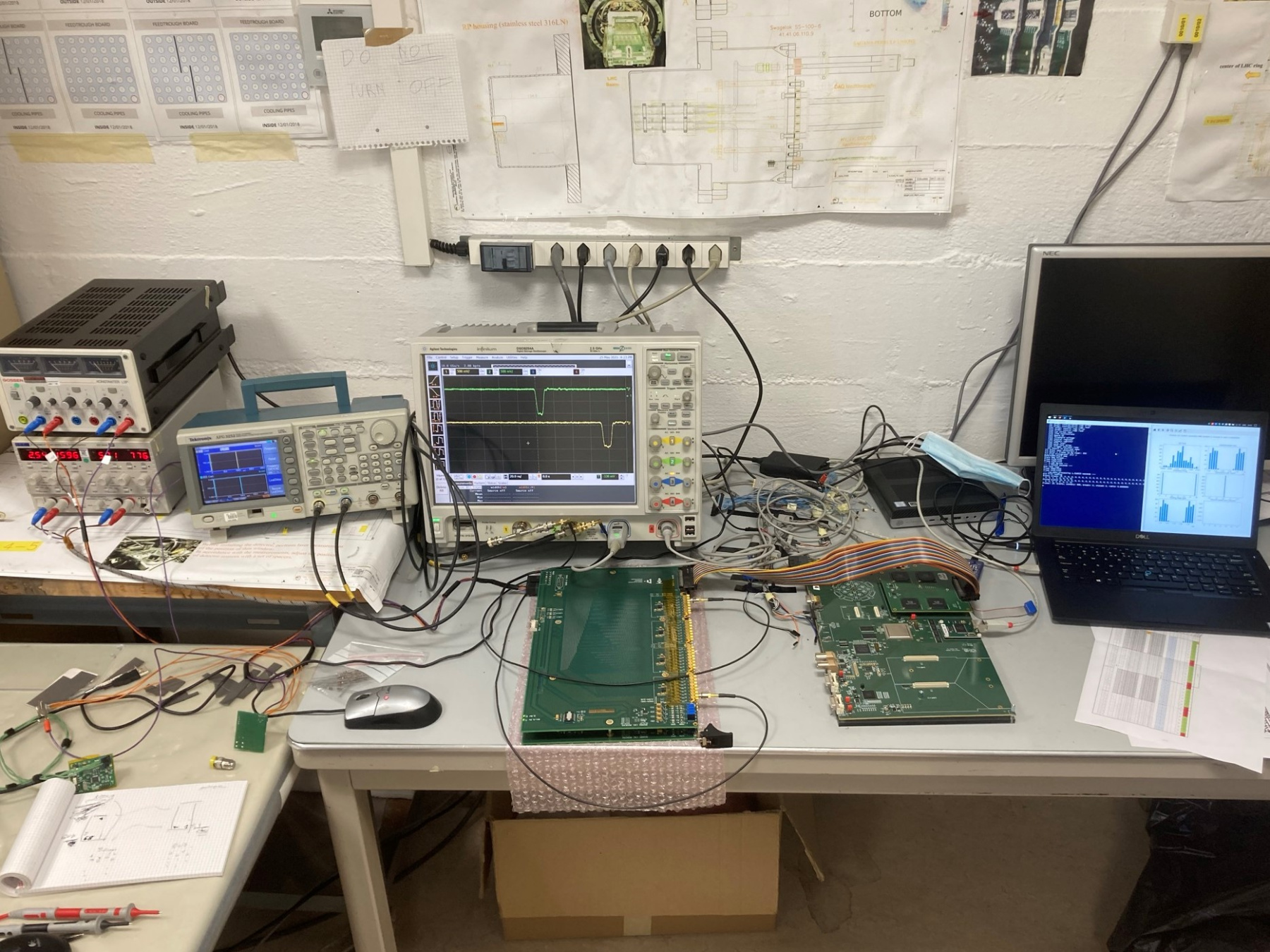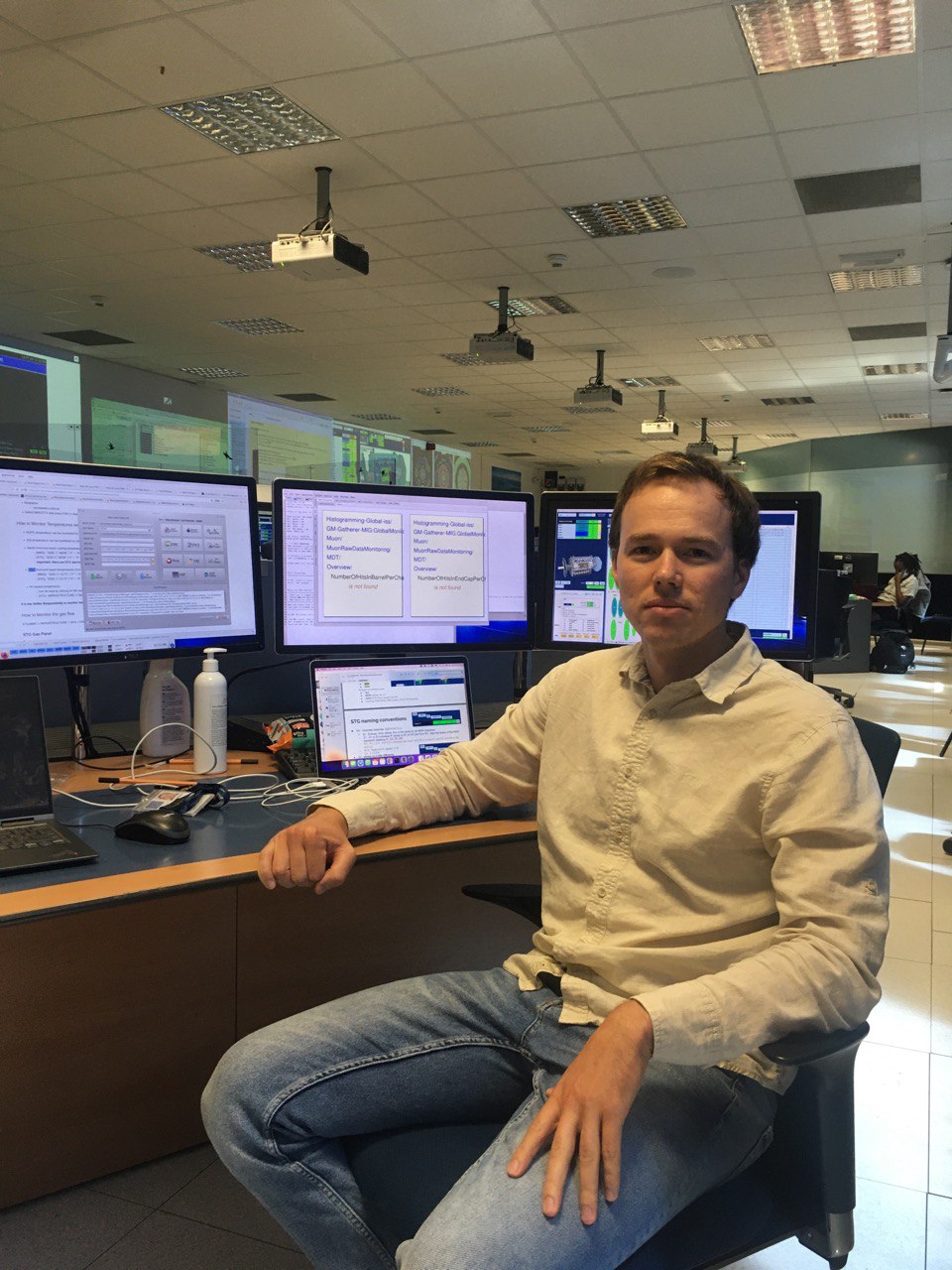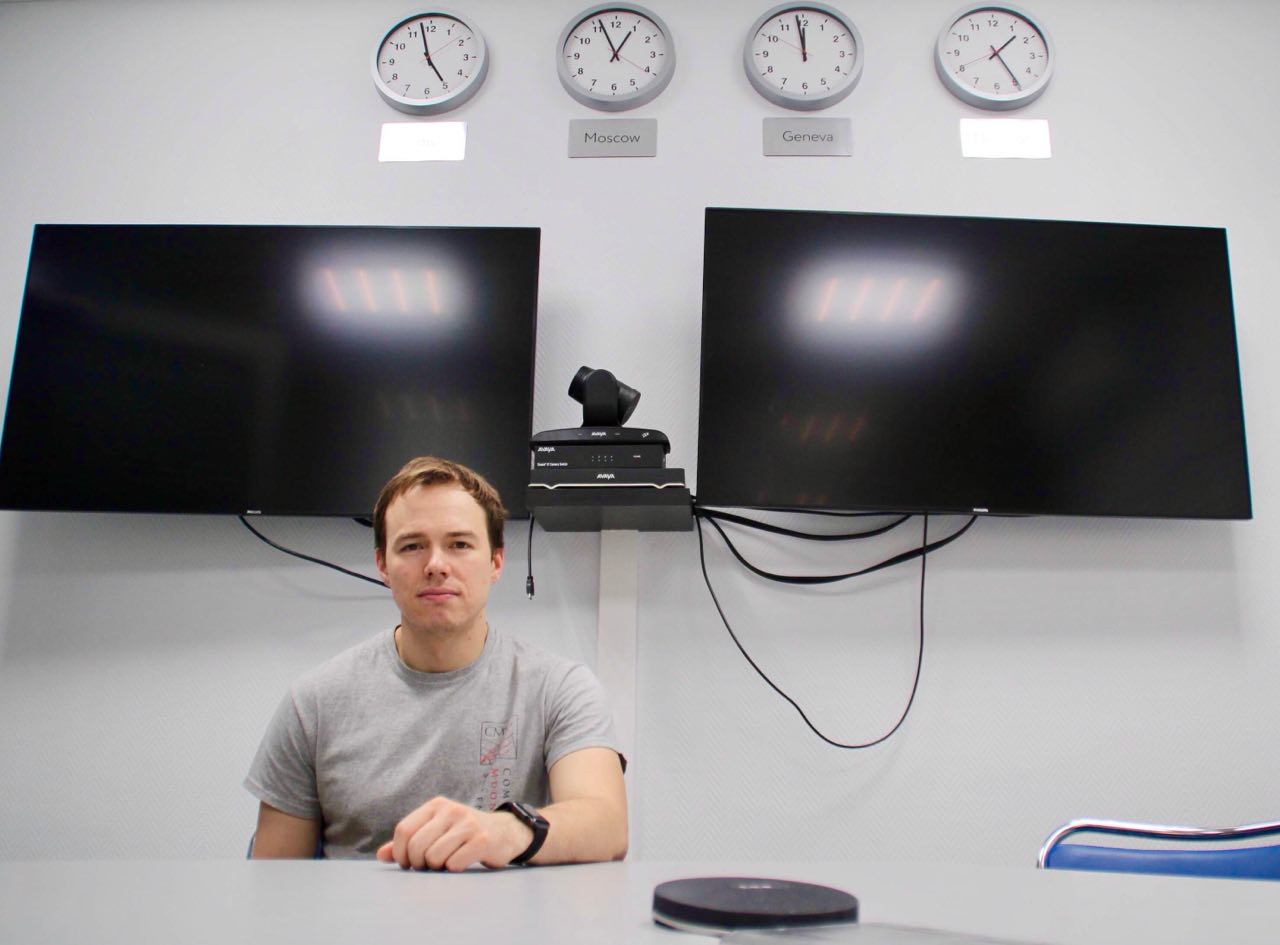The Large Hadron Collider (LHC) is the largest experimental site in the world. After being upgraded since 2018, on July 5 it went live for the third time. It will continue operating until the end of the 2025. This time, the LHC is equipped to work with new maximum beam energy, so physicists will be able to collect twice as much data than from two previous experiments combined. TSU scientists have been participating in LHC operation since 2015: from solving engineering tasks to analyzing data from the experiments.
In cooperation with CERN (European Organization for Nuclear Research), a group of TSU scientists participated in the second operational run and in the upgrade during the second long shutdown. Vladislav Borsch and Yuriy Bordulev work on experiments conducted on the LHC at CERN: develop software, test detectors, create algorithms for data optimization, and other tasks.
Vladislav Borsch, junior research fellow at the TSU Laboratory of High-Energy Physics, has been developing electronics for CERN since 2018. He worked on software to collect and process data from detectors and firmware for programmable logic devices that are used for processing large amounts of data in real-time.

Currently, Vladislav Borsch works on the Precision Proton Spectrometer (PPS), a subdetector of the Compact Muon Solenoid (CMS). The CMS experiment is one of two large general-purpose particle physics detectors built on the LHC with the goal of searching for the Higgs boson, new physics, and dark matter. CMS collaboration employs around 3,600 people from 183 laboratories and universities of 38 countries, including Russia.
“I came back from another business trip on July 1, and we tested and launched the experiment. We worked mostly underground, on the collider itself,” says Vladislav Borsch. “Our laboratory works as a part of a bigger collaboration, and we spend some time at CERN every year, implementing and testing our inventions. We also participate in shifts, when we monitor and perform routine maintenance of the LHC.”
The group working on the PPS includes around 50 specialists from all over the world. Vladislav Borsch says that working in an international team became the most interesting part of his experience at CERN.

“At the beginning of my work everything seemed absolutely chaotic for me: many people speaking many different languages, I had no idea how it functioned… but the common work unites people. Our group includes people from Russia, Italy, Hungary, Germany, Bulgaria, and other countries. It impressed me most of all – how people with different languages, cultures, mindsets work together on a problem and solve it.”
Yuriy Bordulev’s group mostly consists of people from Europe and the US. He got to know them personally during this business trip. Due to the pandemic, he had been unable to come to CERN for two years and worked remotely via Zoom. He says that the professional communication with colleagues is the same as in any Russian team, but what surprised him the most was the camaraderie between top managers and common engineers: for example, the director of ATLAS collaboration and even the director of CERN can be met in a common cafeteria.
Yuriy Bordulev has been working with CERN since 2017. He visited the laboratory 10-15 times: he doesn’t want to part with his family for long, so he usually stays for 2-3 weeks and works remotely most of the time. Currently, he is in Switzerland with his wife and children on a six-month business trip. It is the final trip under a grant he received in 2020.

“I optimize LHC data storage and work on ATLAS – the largest detector in the world, which generates a large amount of data. My colleagues check the quality of physics-related data, and I optimize service data on the condition of the detector and equipment information,” explains Yuriy Bordulev. “New data is generated every day and take a lot of space. My mission within the grant is to develop new data storage algorithms to reduce the amount of data stored while preserving the information and work speed for the end-user. I plan to finish my work in August.”
While talking about his future, he mentions the opportunity to continue his work abroad at CERN.
“There are two roads for me now: to prolong my stay, move here in a while, participate in various projects of collaboration, or to work remotely most of the time and develop the contribution of the local university team in projects with CERN. I want to stay in Tomsk for now. Skills that I have acquired here since 2017 move me forward and enrich my professional experience, making it applicable in both science and technology.”

CERN is the largest laboratory of high-energy physics, located in Geneva, Switzerland. Tomsk State University scientists have collaborated with CERN since 2015: it was the first Russian university to join ATLAS, and then TOTEM-CMS collaboration, in 20 years. The collider uses arsenide-gallium sensors invented at TSU with no analogs in the world. TSU Laboratory of High-Energy Physics, founded under a special mega-grant from the Government of the Russian Federation, analyzes data collected at the LHC. In 2020, students at TSU and other universities took part in online-intensive summer school on high-energy physics, where they got acquainted with the inventions of TSU scientists who participated in CERN experiments and learned how to use statistical methods for research and apply basic methods to solve data analysis tasks.